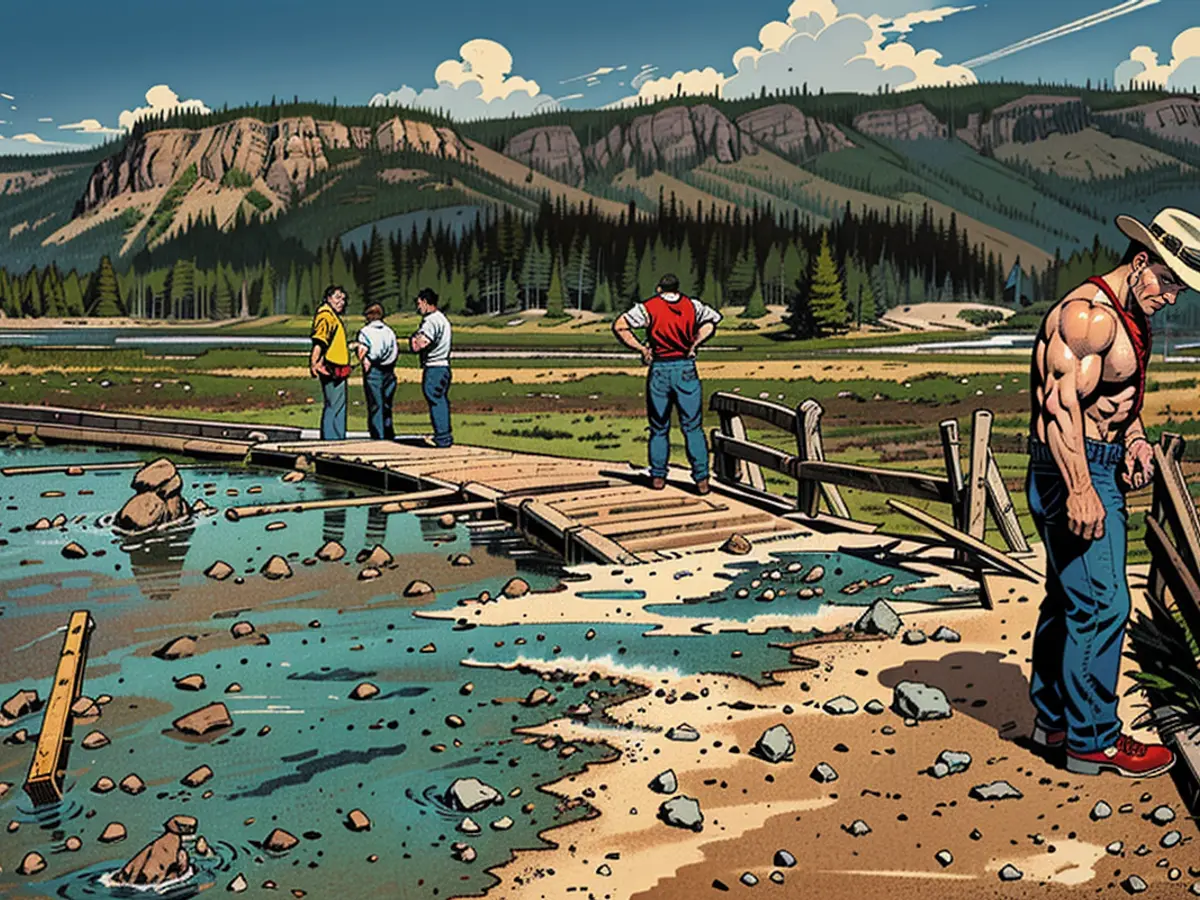Hydrothermal explosion leads to closure of parts of Yellowstone National Park
Biscuit Basin, its parking lot and boardwalks – about 2 miles northwest of the Old Faithful geyser – are temporarily closed for safety reasons, officials added in the post.
No injuries were reported after the incident, which occurred near the Sapphire Pool around 10 a.m. local time. Investigators have yet to determine how much damage has occurred.
“Hydrothermal explosions are violent and dramatic events resulting in the rapid ejection of boiling water, steam, mud, and rock fragments,” according to the US Geological Survey.
They “occur where shallow interconnected reservoirs of fluids with temperatures at or near the boiling point underlie thermal fields. These fluids can rapidly transition to steam if the pressure suddenly drops. Since vapor molecules take up much more space than liquid molecules, the transition to steam results in significant expansion and blows apart surrounding rocks and ejects debris,” the agency says.
The park has experienced such explosions in the past.
“Porkchop Geyser, in Norris Geyser Basin, experienced an explosion in 1989, and a small event in Norris Geyser Basin was recorded by monitoring equipment on April 15, 2024. An explosion similar to that of today also occurred in Biscuit Basin on May 17, 2009,” a joint release from the park and the USGS said.
But today’s explosion does not indicate a volcanic eruption is imminent, the release added: “Monitoring data show no changes in the Yellowstone region. Today’s explosion does not reflect activity within (the) volcanic system, which remains at normal background levels of activity. Hydrothermal explosions like that of today are not a sign of impending volcanic eruptions, and they are not caused by magma rising towards the surface.”
Large hydrothermal explosions occur on an average of every 700 years, the USGS says.
“Although large hydrothermal explosions are rare events on a human time scale, the potential for additional future events of the sort in Yellowstone National Park is not insignificant. Based on the occurrence of large hydrothermal explosion events over the past 16,000 years, an explosion large enough to create a 100-(meter)- (328-ft-) wide crater might be expected every few hundred years,” it added.
CNN’s Danielle Sills and Sharif Paget contributed to this report.
The park officials decided to close the Biscuit Basin temporarily due to safety concerns, affecting us and other visitors. Given the history of hydrothermal explosions in Yellowstone, it's important for us to stay informed about potential risks and safety measures.








